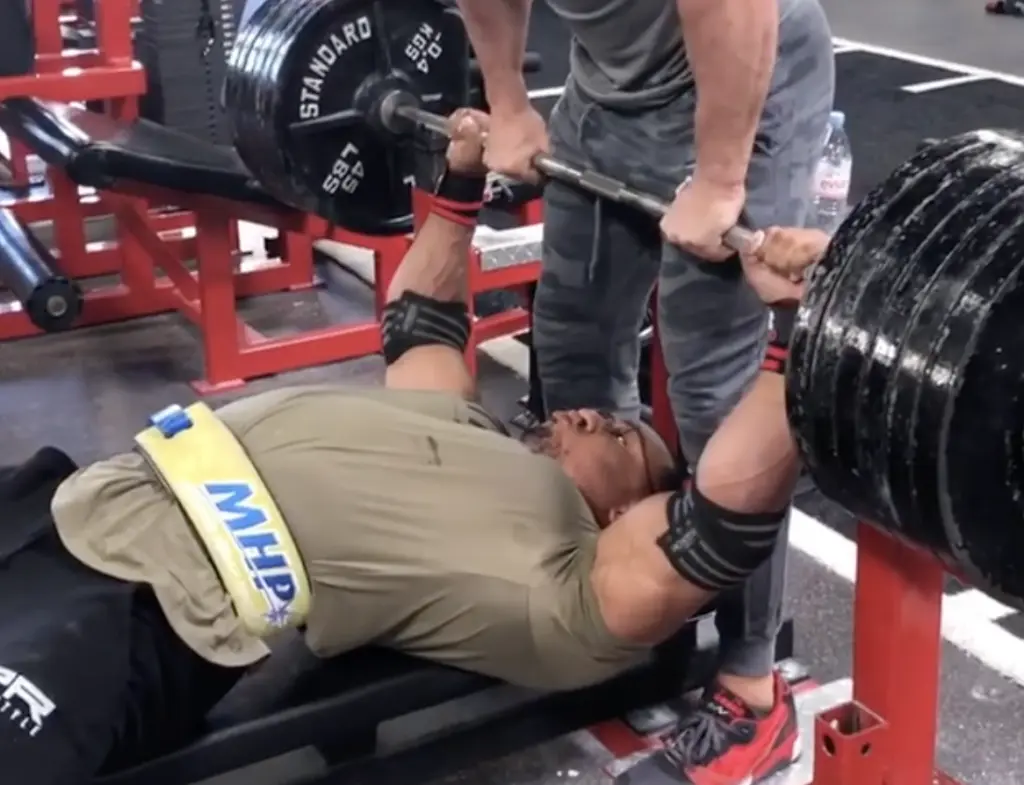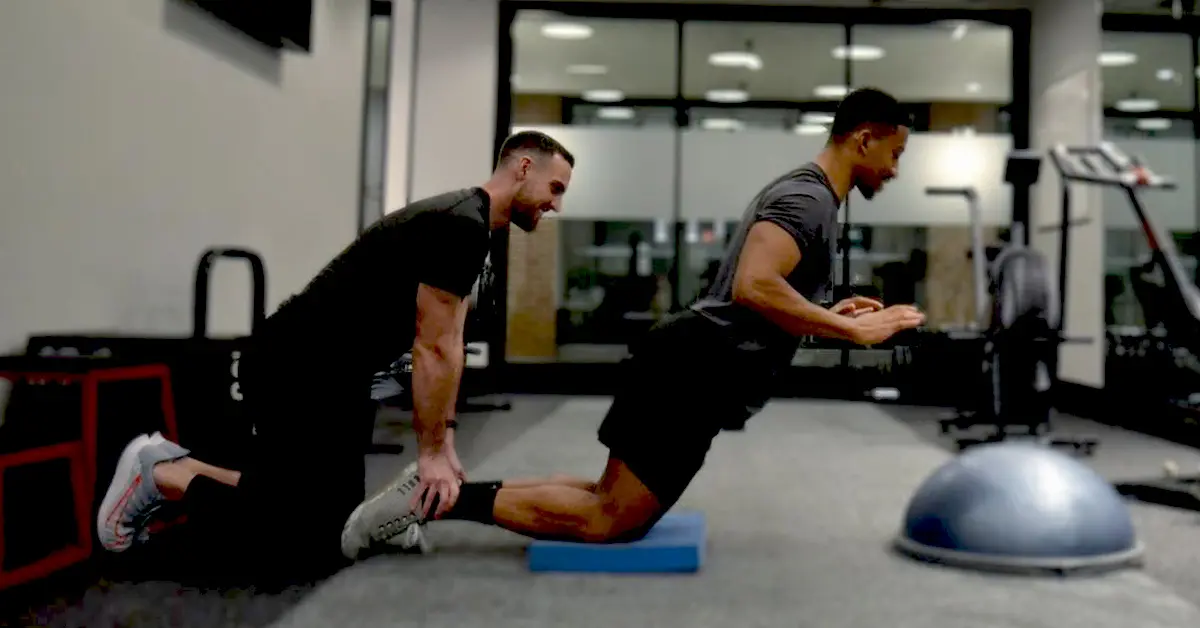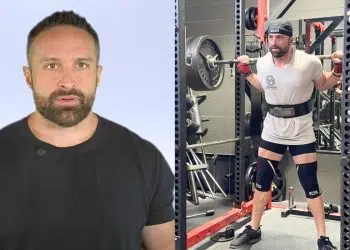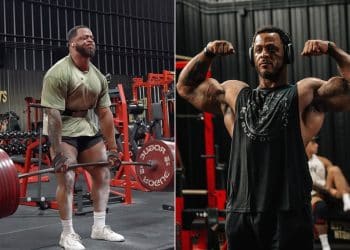Most resistance exercises involve two phases of movement – one where you lift, and another where you lower your chosen weight. Collectively, this is called an isotonic contraction. ‘Iso’ means equal, ‘tonic’ means energy, and both words are derived from the Greek language.
Some exercises involve no movement, such as planks. We call those isometric contractions – meaning equal length.
But, the majority of exercises you do in the gym are isotonic – you lift and then you lower. Lifting and lowering involve two different types of muscle contractions.
Concentric vs. Eccentric – What’s the difference?
Lifting a weight involves a concentric contraction. During concentric contractions, your muscles generate tension as they shorten.
Imagine doing a biceps curl. As you bring the weight up toward your shoulders, you can see your biceps brachii shortening and bunching up. Your biceps look bigger in this contracted position, but really, they’re just shortened and compressed.
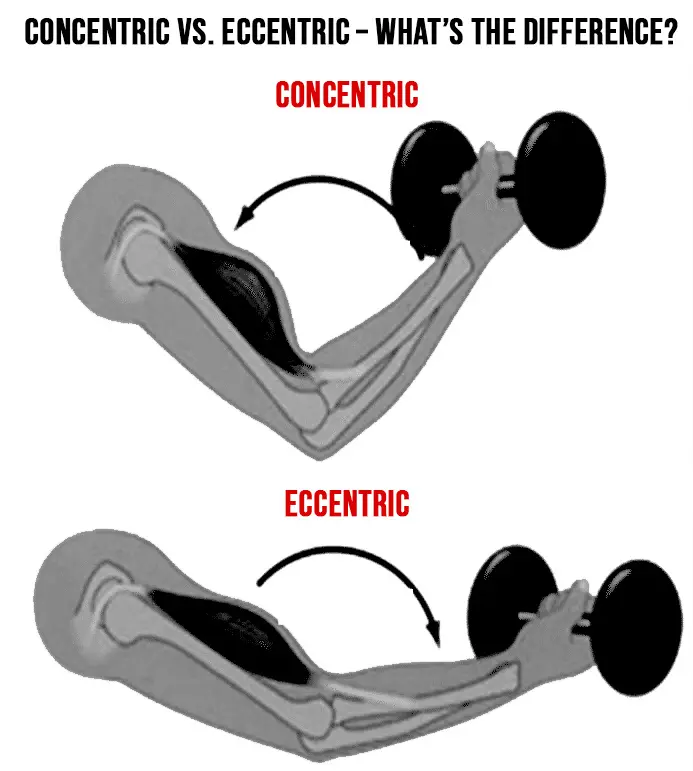
In a concentric contraction, your muscle must generate more force than the weight you are lifting to move it upward against the pull of gravity.
Level Up Your Fitness: Join our 💪 strong community in Fitness Volt Newsletter. Get daily inspiration, expert-backed workouts, nutrition tips, the latest in strength sports, and the support you need to reach your goals. Subscribe for free!
Lowering a weight back down involves an eccentric contraction. Eccentric contractions involve generating tension as your muscles lengthen. Think of an eccentric contraction as braking or slowing the descent of whatever you have just lifted. Using the example of the biceps curls again, this means lowering the weight back down to the start position.
In an eccentric contraction, your muscles generate slightly less force than the weight you are using to control its descent. If you produced the same amount of force, it wouldn’t move – and that’s an isometric contraction.
Some exercises start with a concentric contraction, while others begin with an eccentric contraction. Bench presses and squats, for example, start with an eccentric phase, whereas deadlifts and pull-ups start with a concentric phase.
While most exercises involve an eccentric and a concentric phase, it is possible to emphasize each type of contraction by modifying whatever movement you are doing. You can even eliminate one type of contraction and do eccentric or concentric-only training.
Because there may be times when eccentric or concentric training are especially beneficial, it pays to know a little more about these different training methods.
Eccentric training
Eccentric training, also known as negative training, means paying extra attention to the lowering part of an exercise. In some cases, the eccentric phase is merely emphasized, such as lowering a weight more slowly and deliberately than you lift it.
In other cases, the weight is only lowered, and there is no active concentric phase at all.
Other forms of eccentric training involve using heavier weights to overload during negatives before reducing the weight for the concentric phase (e.g. using spotters or weight releases).
We’ll discuss all of these variations and how to do them in a moment, so be patient!
But why would you WANT to focus on lowering weights? After all, it’s called weightlifting, and not weight lowering, right?
It turns out that the eccentric phase of any exercise is crucially important for building size and strength. According to research, the eccentric phase is when most muscle breakdown occurs, and that produces greater increases in muscle mass (1).
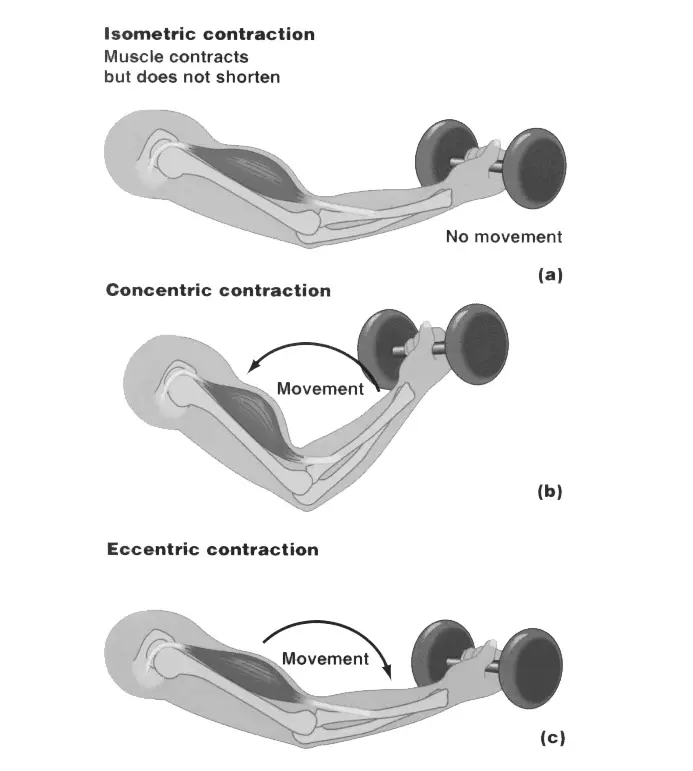
In addition, you are stronger eccentrically than you are concentrically. That means you can lower more weight than you can lift. How much stronger are you eccentrically than you are concentrically? As much as 170%! So, if you can lift 100 lbs., there is an excellent chance you can lower 170 lbs. Needless to say, you should NOT jump in and try negatives with such heavy weights. That’s asking for injury.
But, lowering heavier weights eccentrically can help increase concentric strength. After all, you’ll be able to use heavier weights than would otherwise be possible, and that will have a significant impact on muscle strength.
Also, lowering a weight takes less energy than lifting it. That’s why you can reach positive failure – the point where you cannot lift the weight, but still do a few negative reps if someone helps you raise the bar.
So, whether you want to build bigger muscles or get stronger, paying attention to the eccentric is a must.
But how do you do that?
It turns out there are several ways to emphasize the eccentric portion of any given exercise or even make it your main focus.
Eccentric-emphasis training
This is the easiest way to start enjoying the benefits of eccentric training. To do it, simply lower the weight slower than you lift it. For example, lift it in two seconds and lower it in four. This will also extend your time under tension, which is essential for muscle growth.
Forced reps
With this method, you rep out to concentric failure, and then have a training partner help you lift the weight so you can then lower it by yourself. This method extends your set beyond its normal endpoint, allowing you to do more reps.
You can also do forced reps on your own. For example, when doing leg extensions, raise the weight with two legs, and lower it with one. You can use this method on lots of unilateral (single-limbed) exercises, including pistol squats, concentration curls, and single-arm push-ups. Simply lift using two limbs and lower with one.
Eccentric-only training
With this method, you waste no effort on lifting the weight and put all your energy into lowering it instead. For example, you could have two burly spotters raise the bar for you during bench presses, leaving you to lower the weight slowly on your own.
Needless to say, if you use this method, you need two reliable, practiced spotters because, if things go wrong, you could quickly find yourself pinned beneath a very heavy barbell. Eccentric-only training tends to involve very heavy weights and is best left to experienced exercisers. This is not a method for beginners.
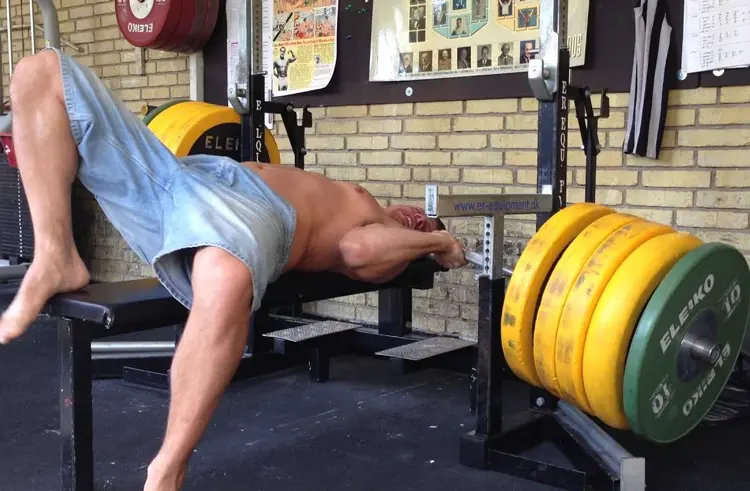
However, beginners can use eccentric-only reps to build the strength needed to do your first pull-up. After gripping your pull-up bar, use your legs to climb up and then use your arms only to lower yourself down under control. After a few weeks of eccentric training, you should find that your concentric strength has improved enough that you are now able to do your first proper pull-up.
Level Up Your Fitness: Join our 💪 strong community in Fitness Volt Newsletter. Get daily inspiration, expert-backed workouts, nutrition tips, the latest in strength sports, and the support you need to reach your goals. Subscribe for free!
Weight releases
Weight releasers allow you to lower more weight than you lift. They attach to a barbell and unhook at the bottom of your rep when the weight releaser touches the floor. They are adjustable, are commonly used for squats and bench presses, and are popular amongst powerlifters.
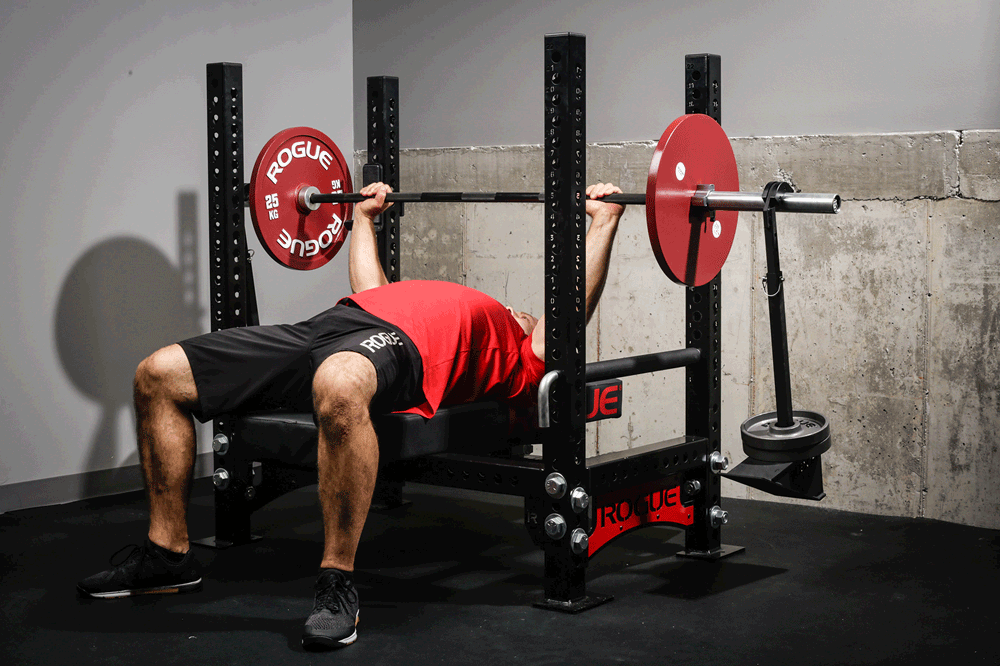
Eccentric Drawbacks and Risks
While eccentric training can be very productive, it also has some inherent drawbacks and risks (2). Consider the following before you dive head-first into eccentric training.
Increased muscle damage:
One of the reasons that eccentric training is so good for hypertrophy is that it causes a lot of muscle damage. This is one of the main triggers for muscle growth. However, it also means that you may need longer to recover between eccentric workouts than regular workouts. This could potentially undo any benefits as you may detrain between workouts. You may also need to increase your protein intake to fuel muscle repair.
Severe delayed onset muscle soreness
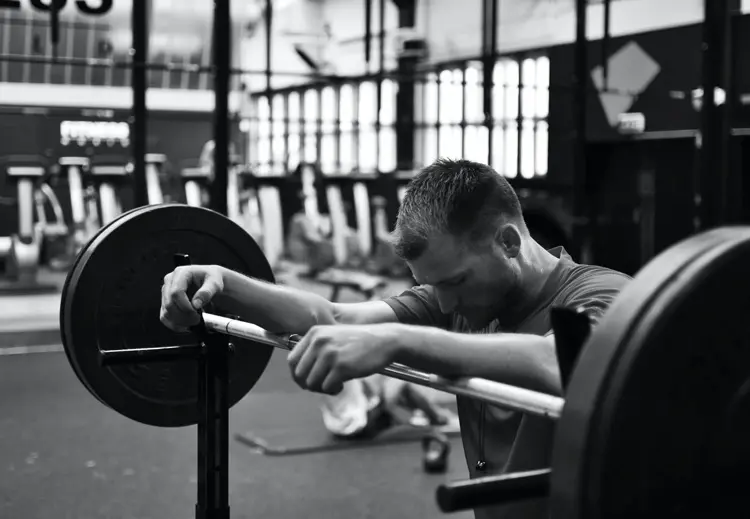
DOMS can occur after any intense workout, but is more common and usually worse after eccentric training. There are several reasons for this, including more muscle damage, using heavier than usual weights, increased inflammation, and greater oxidative stress. If severe DOMS stops you from training, any benefits could be lost.
Increased risk of muscle and joint injury
Because eccentric training allows you to lift heavier loads, there is an increased risk of muscle and joint injury. Because of this, eccentric training should be introduced gradually and without jumping into supra-maximal weights too soon.
Concentric training
The truth is that, while eccentric training is a recognized training method, concentric-only or even concentric-emphasis training is much less common and is seldom used. The concentric phase of any exercise is undeniably important, but emphasizing it will not provide any real benefit.
After all, you are weaker concentrically than you are eccentrically, and concentric reps are more tiring than eccentric reps. This means it’s arguably harder to emphasize the concentric part of any exercise, i.e., lift a weight slower than you can lower it.
There are some types of training that are naturally more concentric than they are eccentric, including:
- Swimming
- Box jumps where you step back down rather than jump
- Clean and jerk, power cleans, and snatches
- Throwing, kicking, and punching
Olympic weightlifters tend to do more concentric than eccentric training. They lift heavy weights, but usually just drop them instead of lowering them under control. This may help explain why, despite their strength and power, Olympic weightlifters aren’t generally as muscular as bodybuilders and powerlifters who do a lot of eccentric training. Eccentric training is inextricably linked to muscle hypertrophy.
If concentric training does have a benefit, it is that it is less likely to cause delayed onset muscle soreness than eccentric training. Conceivably, you could train more often if you did concentric-only training. After all, Olympic weightlifters sometimes train as many as 14 times per week using almost exclusively concentric-only training.
But, unless you limit your choice of exercises to the Olympic lifts and throwing and jumping type exercises, most concentric muscle actions are accompanied by eccentric muscle contractions. If you train hard, DOMS is almost unavoidable.
Eccentric vs. Concentric example exercises
The majority of exercises include an eccentric and a concentric phase. After all, what goes up must come down. But there are exceptions where all the work is eccentric or concentric, or one of the phases is emphasized. Here are a few examples:
Eccentric exercises:
1. Nordic hamstring curls
Nordic hamstring curls this exercise is typically done with a slow/controlled eccentric and then using the arms to aid in the concentric. Anchor your feet securely and then use your hamstrings to lower your chest down toward the floor. Push hard with your arms to return to the starting position.
2. Eccentric pull-ups
Eccentric pull-ups or should these be called lower downs? Use your legs to step or jump up and then use your arms to lower yourself down under control. This is an excellent way to build strength and size. Add a few eccentric pull-ups to the end of your last set of regular pull-ups.
3. Negative emphasis pistol squats
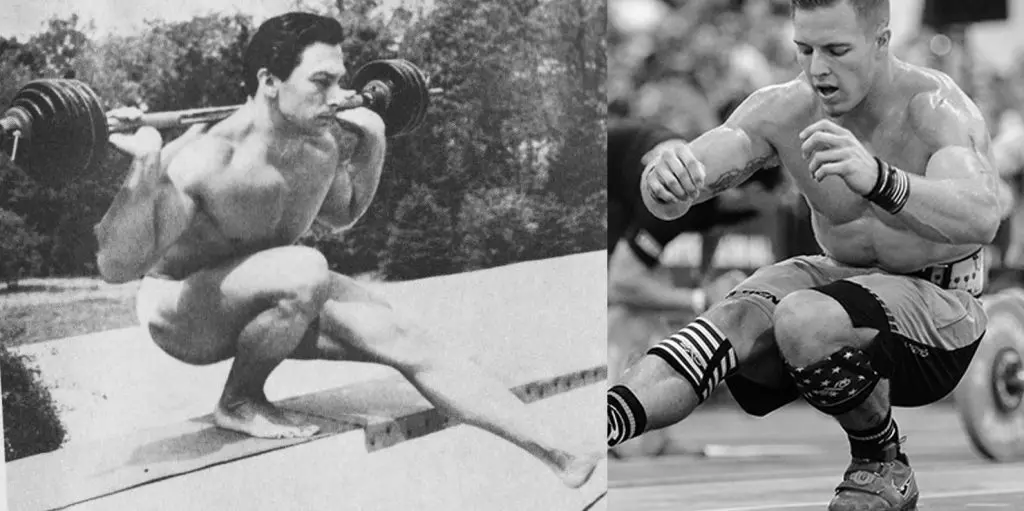
Pistol squats are one-legged squats. Make this tough lower body exercise more manageable by lowering yourself with one leg (eccentric) and using both legs to stand back up again. Use a box to make sure you hit the same depth for all your reps.
4. Depth jumps
Plyometric jumping exercise typically involve a rapid loading followed by an equally rapid unloading. With depth jumps, you drop from a height which increases the eccentric force. Needless to say, because of the increased impact on landing, this exercise should be left to the experts.
Concentric exercises:
1. Cleans and snatches
With both of these exercises, the emphasis is on lifting the weight as powerfully as possible. The bar is then lowered quickly or even dropped so that no energy is wasted on the eccentric portion of the lift. If you drop the bar, you’ll need bumper plates and a shock-absorbing lifting platform.
2. Overhead medicine ball throws
Throwing a medicine ball overhead is primarily a concentric exercise. Working the posterior chain, you put all your energy into the throw and then chase after the ball to do another rep. This is a good power exercise and a decent alternative to the harder to learn Olympic lifts. No medicine ball? Try this move strongman style with a keg!
3. Sled pushing and pulling
Sleds can be used for conditioning and building concentric strength. Walking forward will develop your posterior chain while walking backward emphasizes your quads. You can also train your upper body using a sled. Most sled training exercises are predominately concentric in nature.
4. Concentric only deadlift
For this exercise, you lift the barbell as normal but then drop it instead of lowering it. As with the Olympic lifts, you’ll need bumper plates and a shock absorbing platform for this exercise.
5. Squat jumps in deep water
With this exercise, the water provides not only most of the concentric resistance, but it also helps reduce the eccentric muscle action. This is a good low-impact alternative to plyometric exercises for anyone with lower limb injuries.
Wrapping up
A lot of exercisers risk sabotaging their own progress by ignoring the importance of the eccentric part of their workouts. Almost all exercisers should pay attention no only to how they lift a weight, but how they lower it too. In fact, if you want to maximize strength and size, the eccentric part of any exercise is worth emphasizing.
However, that doesn’t mean that the concentric portion is entirely worthless. In fact, according to studies, it’s every bit as important for muscle hypertrophy and performance (3), and any benefits to be gained from eccentric-only training are actually quite small.
By all means, emphasize the negative, and even do some negative-only training if you are serious about building maximal strength and size. Hopefully, you won’t mind the extra muscle soreness that this type of workout will earn you!
But, don’t dismiss the importance of concentric contractions. After all, most feats of strength involve lifting weights, and not lowering them slowly.
References:
1 – PubMed: Skeletal Muscle Remodeling in Response to Eccentric vs. Concentric Loading: Morphological, Molecular, and Metabolic Adaptations https://www.ncbi.nlm.nih.gov/pmc/articles/PMC5495834/
2 – PubMed: Eccentric Muscle Contractions: Risks and Benefits https://www.ncbi.nlm.nih.gov/pmc/articles/PMC6510035/
3 – Journal of Strength and Conditioning: Hypertrophic Effects of Concentric vs. Eccentric Muscle Actions: A Systematic Review and Meta-analysis https://insights.ovid.com/strength-conditioning-research/jscr/2017/09/000/hypertrophic-effects-concentric-vs-eccentric/31/00124278

